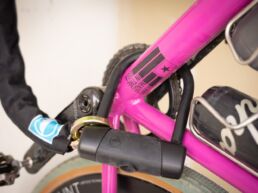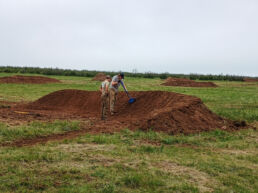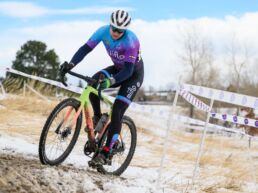 Here’s the third article in Dr Skrdla’s YGR series.
Here’s the third article in Dr Skrdla’s YGR series.
Article One- Road Bike Visual Demands
Article Two- What is Dynamic Visual Acuity?
by Dr. Matthew Skrdla
Visual Information Processing while cycling is the ability to process what you see both in front of you and around you and then execute an appropriate motor response to that information. One of the most important keys to safe cycling is the processing of visual information. While cycling, the athlete is constantly interpreting visual cues such as shadows, terrain, fellow riders and auto traffic. The ability to modulate attention appropriately; often splitting attention among multiple stimuli is critical to safe descending, cornering, and pack riding.
The demands placed on the cyclist to process visual information is unique in the sporting world in that the time course of action in which the processing of visual information occurs is incredibly variable (from slow grinds uphill to ripping descents – the speed, lighting, shadows, fellow riders, auto traffic, and road or trail conditions are extremely variable). Compare this to a more static environment like a football or baseball stadium, basketball court, or even a race car track, and you can easily see why both mountain and road cycling presents unique demands on our visual system.
A typical model utilized for describing this process is described below. In this example vision would be the ‘Sensation’:
Cycling therefore requires the athlete to process visual information (Sensation), determine a Perception (a cognitive response), and Execute an appropriate motor response. The ability of a cyclist to process key factors in terrain or how other cyclists around them are going to react to the variables of light, movement, pavement and trail contours, etc., has a huge impact on how successful they will be at choosing the appropriate action to keep themselves safe and others in their group safe as well.
The motor response dictated by the interpretation of visual information is referred to as Visual Motor Reaction Time. Visual Motor Reaction Time has been shown to be reduced by cold weather, exercise fatigue and reduced field of vision (due to constraints of certain sunglasses or other eye wear). I see many people riding with their everyday glasses while out on the road and trail – realize your enjoyment of cycling could be much improved by simply wearing the appropriate eye protection.
Protective eyewear or sunglasses with a large field of view that enhance the contrast of the terrain can greatly improve the ‘Sensation’ in the model above. The more information the athlete has to create an accurate ‘Perception’, the more likely they can ‘Execute’ an appropriate motor response based on prior experience in their working memory. In a normal healthy adult, this can all happen in a fraction of a second!
A good exercise to enhance your Visual Information Processing ability is any strobe light activity. Many variations of this exercise are available and Nike even manufactures glasses for performing sports vision therapy in the athlete’s environment (so you can get as high tech with this as you want www.nikestrobegoggles.com and youtube video http://www.youtube.com/watch?v=4txQ_ZWfsZI) .
One home exercise that works well is to switch the lights on and off, once, as quickly as you can. Try to pick out 3 items in your ‘central view’. Next, switch the lights on and off, once again, and try to pick up on 2 peripheral items in the room. Finally, switch the lights on and off, once again, and try to pick up on 2 more peripheral items in the room. Continue this exercise until you can pick out 7 to 9 items in a room w/ one quick light switch (instead of the 3 switches). This exercise simulates my original article on Visual Information Processing: An example of this on the road bike is interpreting how deep a pothole is, how fast you are coming up to it, and what’s the safest route for navigating around it while directing those you are riding with to do the same. That’s a lot going on in a very short time!
peripheral items in the room. Finally, switch the lights on and off, once again, and try to pick up on 2 more peripheral items in the room. Continue this exercise until you can pick out 7 to 9 items in a room w/ one quick light switch (instead of the 3 switches). This exercise simulates my original article on Visual Information Processing: An example of this on the road bike is interpreting how deep a pothole is, how fast you are coming up to it, and what’s the safest route for navigating around it while directing those you are riding with to do the same. That’s a lot going on in a very short time!
Athletes typically perform better at this activity than non-athletes. The Illinois Eye Institute (where I trained) held clinics regularly with professional athletes. While most of us may only be able to accurately identify 8 or 9 targets flashed in the above strobe activity, athletes like Scottie Pippen and Michael Jordan could easily target 14. John Elway was also noted for utilizing this technique during film study. Give it a try! You may be surprised at how good you are!
Happy Riding!






